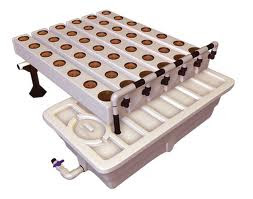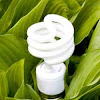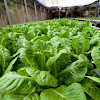 In olden days and today as well plants proper canals were build and water supply system was laid down in the farming zone so that sufficient quantity of water may get delivered to the plants which are in the process of growing. As we all know water is the essential element for plants. With water soil and other nutrients that are present in the soil is also important as without it plant would not grow properly and does minerals nutrients are something that is not invented but it already exist in the earth crush and plants that grow utilizing it as well as the oxygen in the air for its complete and healthy growth. If you visualize the whole process you would be really amazed as nature works for it. Similar is the process of hydroponics, I have explained hydroponics many times in my previous articles to get more information on them check my previous writing as for now the information I want to share is the extensions provided by hydroponics which makes life easier and growing plants a fun full process.
In olden days and today as well plants proper canals were build and water supply system was laid down in the farming zone so that sufficient quantity of water may get delivered to the plants which are in the process of growing. As we all know water is the essential element for plants. With water soil and other nutrients that are present in the soil is also important as without it plant would not grow properly and does minerals nutrients are something that is not invented but it already exist in the earth crush and plants that grow utilizing it as well as the oxygen in the air for its complete and healthy growth. If you visualize the whole process you would be really amazed as nature works for it. Similar is the process of hydroponics, I have explained hydroponics many times in my previous articles to get more information on them check my previous writing as for now the information I want to share is the extensions provided by hydroponics which makes life easier and growing plants a fun full process.The entire process I mentioned above has been made a model and turned into a function called Aeroflo it is extension for hydroponics growing plants process. It has many models according to your need, scale and purpose of why you using it. It is a very useful tool which gives hydroponics plant a steady growth. Aeroflo designed by NASA, this is a true "water-culture" system in which plant roots are suspended in a rapidly flowing stream of oxygen-infused nutrient. The nutrient level adjustor makes it easy for you to control the air/water ratio throughout the various stages of root development. The laser spray provides a fine mist of nutrient solution and oxygen that is constantly being applied to your plants roots. This system is awesome for rapid growth of smaller sized plants up to three feet in height.
The Aeroflo 20 comes complete with everything you need to start growing including the FloraSeries nutrients, Hydroton (grow media), 3" Net Pots, Coco Cup Liners, Pump, Reservior, 2- 6ft Growing Chambers, Support Structure and Injection Manifold.
This System Includes:
- 8 Gallon Reservior
- Two 6ft Growing Chambers
- #3 Mag Drive Pump
- Twenty 3" Net Pots
- FloraSeries Nutrients (FloraGro, FloraBloom, FloraMicro)
- Hydroton Clay Pellets (Growing Media)
- Support Structure
- Injection Manifold
- Two 6ft Laser Spray Line
Now you have got the detailed information, the history and functionality of Aeroflo, the system include section points to the Aeroflo model Aeroflo60 which is the bestseller and easily available too. The Aeroflo series continues with better description but it all depends on your need and usage of it. Isn’t it amazing you do not have worry on a lot of things while planting as this singly handily does all the work of a farmer and nature with producing the same or I must say better results all it needs a little start which you will give and rest it does the entire process by it owns means.




